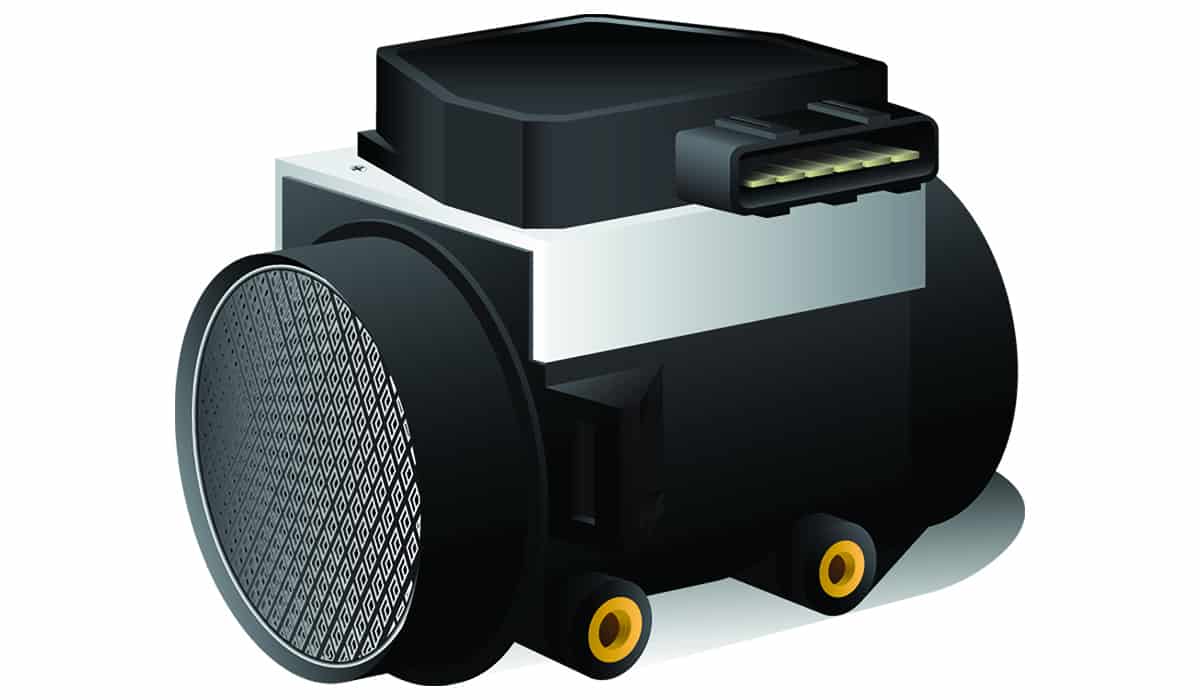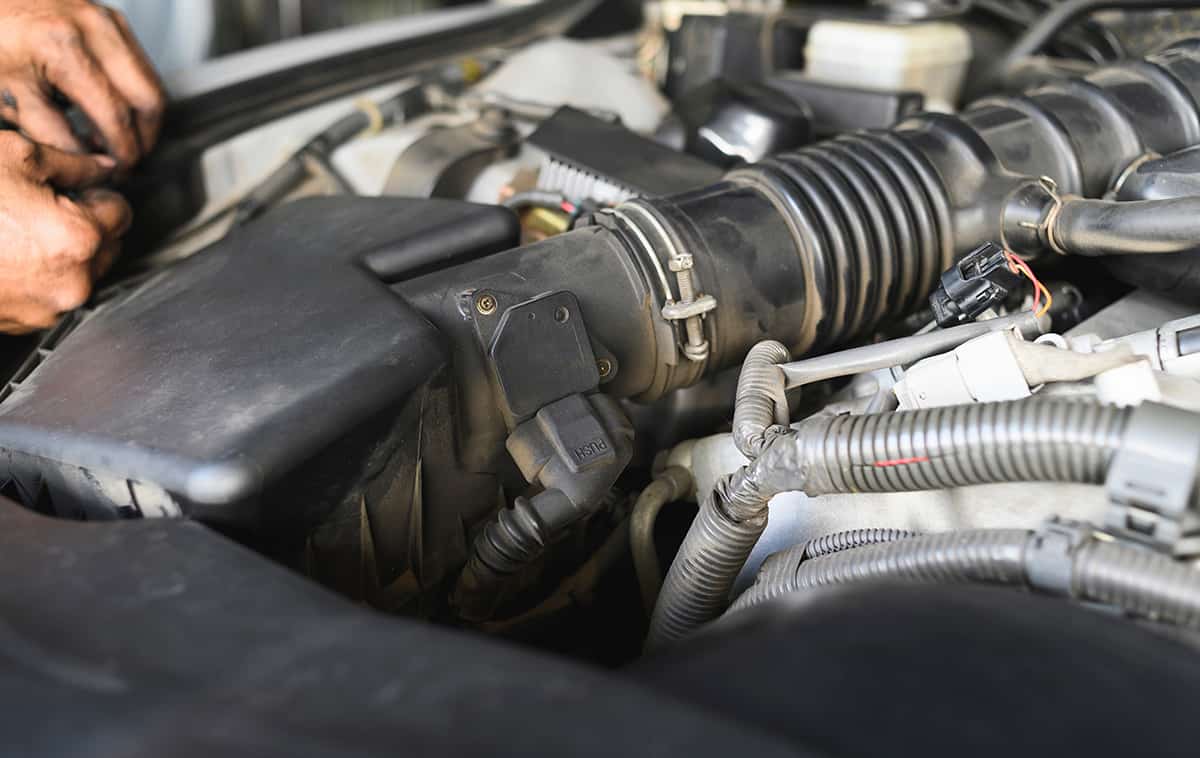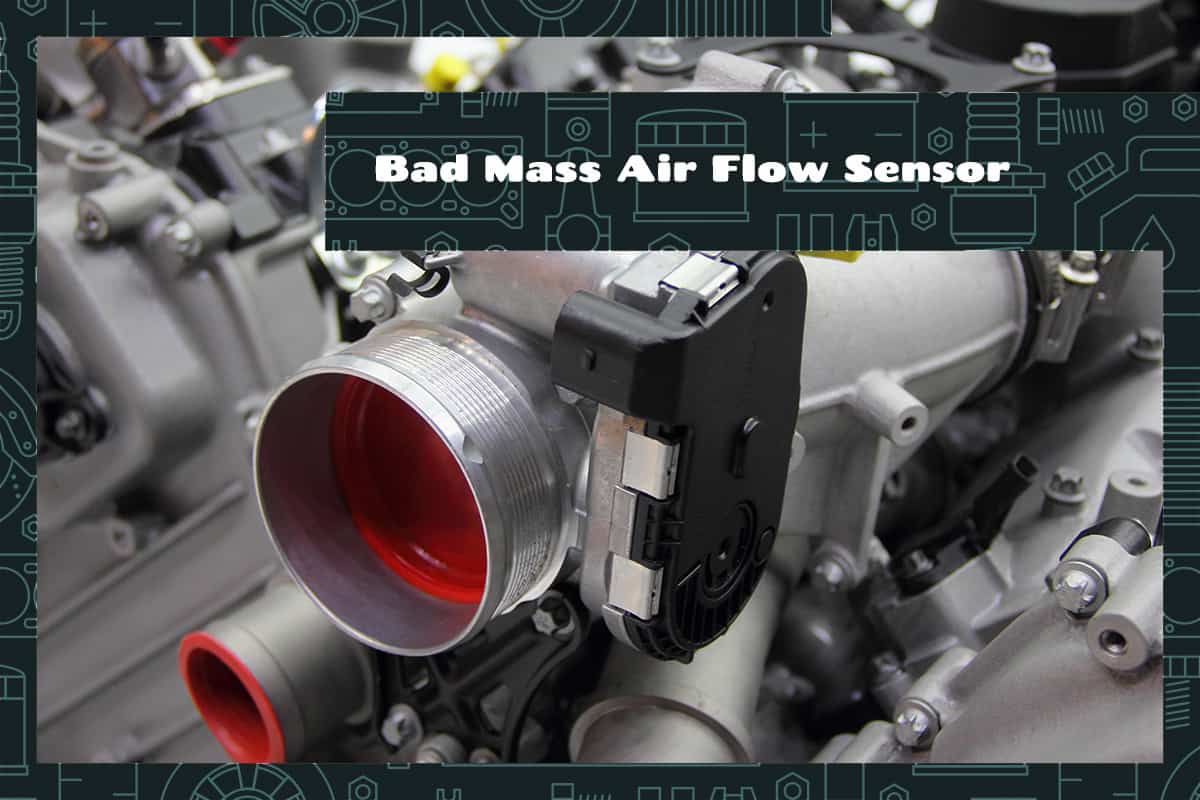The Mass Air Flow Sensor tells the engine how much air is coming in and how fast. If the MAF isn’t working right, your engine might get confused and not work as well as it should. This is a big deal because an engine needs the right mix of air and fuel to run smoothly.
When a Mass Air Flow Sensor goes bad, you may notice:
- Your car having trouble starting or stalling after starting
- Unusually high fuel consumption
- The engine running rough, like it’s coughing or jerking
- The Check Engine Light is on
In this article, we will dive deeper into what a bad Mass Air Flow Sensor is, how to spot the problems it causes, and how to fix or replace it.
Understanding the Mass Air Flow Sensor

The Mass Air Flow Sensor, or MAF, is a crucial component of your car. The MAF sensor’s job is to measure the amount of air entering the engine and send this information to the car’s computer system. From there, the computer determines how much fuel should mix with that air.
How a Mass Air Flow Sensor works
A Mass Air Flow Sensor works in a fascinating way. Picture a wire that’s heated up and placed in the engine’s air intake system. When your car is running, air flows over this hot wire. The more air coming in, the more the wire cools down.
The sensor measures this cooling because it’s directly related to how much air is flowing into the engine. It then sends this information to the car’s computer, which decides the right amount of fuel needed.
Different types of Mass Air Flow Sensors
There are two main types of Mass Air Flow Sensors: Hot Wire MAF sensors and Vane Meter MAF sensors.
Hot Wire MAF sensors work just as we described earlier, using a heated wire. They are more common in modern cars due to their accuracy and fast response time.
Vane Meter MAF sensors work a bit differently. They have a spring-loaded flap/door that gets pushed by incoming air. The more air that comes in, the wider the flap opens. This sensor then translates the flap’s position into an electric signal that the car’s computer can use.
Key components of a Mass Air Flow Sensor
Whether it’s a hot wire or a vane meter MAF, each sensor consists of similar components:
- Sensor element: This could be the heated wire or the flap, which interacts directly with the incoming air.
- Circuitry: This part of the sensor transforms the physical changes (like cooling of the wire or the position of the flap) into electrical signals that the car’s computer can understand.
- Connector: This is how the sensor hooks up to the car’s computer, sending all the vital information about airflow.
Problems with a Bad Mass Air Flow Sensor
The computer in your car relies on the MAF sensor’s information to create a balance of air and fuel for your engine. If the MAF sensor starts providing incorrect information, this balance is disturbed, causing several issues.
Symptoms of a bad Mass Air Flow Sensor
When a Mass Air Flow Sensor starts going bad, your vehicle might behave differently. Recognizing the symptoms early on could save you from bigger issues down the line. So, let’s take a closer look at the symptoms of a bad MAF sensor.
1. Engine problems
This could be your car stalling right after you start it or having difficulty starting at all. Or, it could be that your car’s engine is idling roughly. These issues happen because the engine is either getting too much or too little fuel, thanks to the inaccurate readings from the bad MAF sensor.
2. Decreased fuel efficiency
We all know how painful it can be to the wallet when the cost of filling up your gas tank starts to rise. A bad MAF sensor could be a culprit. If the sensor tells the engine that there’s more air coming in than there really is, the engine will respond by injecting more fuel. This makes for a rich fuel mixture and leads to increased fuel consumption.
3. Reduced performance
You might find that your car isn’t accelerating as quickly as it used to, or it might even hesitate or jerk when you try to accelerate. This is because the engine isn’t getting the right amount of fuel it needs to perform optimally. This can be especially noticeable when driving uphill or when carrying heavy loads.
4. Check engine light
Modern cars have a computer system that keeps an eye on all the different components. If it detects something amiss with the MAF sensor, it will turn on the Check Engine Light to let you know. However, this light can indicate a variety of issues, including traction loss and a bad speed sensor, not just a problem with the MAF sensor.
Causes of a bad Mass Air Flow Sensor
So, what makes a good MAF sensor go bad? There are a few common causes:
- Dirt and debris: Over time, dust and other particles in the air can build up on the sensor, affecting its ability to read the amount of air coming in.
- Damage: Physical damage to the sensor can occur from bumps or accidents, affecting its functionality.
- Electrical problems: Issues with the wiring or circuitry in the MAF sensor can cause it to send wrong signals to the car’s computer.
Long-term effects of ignoring a Bad Mass Air Flow Sensor
Ignoring a bad MAF sensor is like ignoring a small leak in a boat – it can lead to much larger problems:
- Damage to other parts: An incorrect mix of air and fuel can lead to damage in other parts of the engine, like the spark plugs or the catalytic converter.
- Complete engine failure: In severe cases, the engine can stop working entirely.
Solutions and Maintenance for a Bad Mass Air Flow Sensor

If your Mass Air Flow Sensor is having trouble, don’t worry – there are solutions. It’s like getting a flat tire. You can fix it or replace it, and then there are things you can do to prevent getting another flat.
Diagnosing a bad Mass Air Flow Sensor
The first step in fixing a bad MAF sensor is figuring out if it’s really the problem. Diagnosing a bad MAF sensor usually involves a mechanic who uses a device called an On-Board Diagnostic (OBD) tool. This tool can read the error codes from your car’s computer and help the mechanic understand what’s wrong.
Cleaning a Mass Air Flow Sensor
The MAF sensor might just be dirty, like a window covered in dust. You can’t see clearly through a dusty window, and a dirty MAF sensor can’t accurately read the amount of air coming into your engine.
To clean a MAF sensor, you’ll need a special MAF sensor cleaner spray, such as Gunk. With the car turned off, the MAF sensor is carefully removed, sprayed with the cleaner, and then let it dry before being reinstalled.
Replacing a bad Mass Air Flow Sensor
If your MAF sensor is damaged or just too dirty to clean, you may need to replace it. A mechanic can handle this job for you, or if you’re comfortable with car repairs, you can do it yourself.
Preventive Maintenance for Mass Air Flow Sensors
Preventing MAF sensor problems can save you from future headaches. Just like brushing your teeth helps prevent cavities, keeping your MAF sensor clean can prevent issues. Here’s how you can do it:
- Regular cleaning: It’s a good idea to clean your MAF sensor every six months or whenever you need an oil change.
- Protect your air filter: The air filter’s job is to prevent dust and debris from reaching your MAF sensor. Make sure you change it regularly to keep your MAF sensor clean and reduce the risk of stalling.
- Drive carefully: Avoid places with a lot of dust or debris that could dirty your MAF sensor faster.






